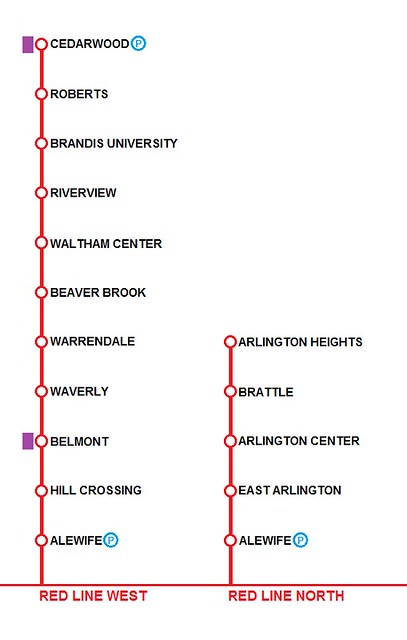JohnAKeith
Senior Member
- Joined
- Dec 24, 2008
- Messages
- 4,337
- Reaction score
- 82
Waltham should definitely stay as a CR stop - it's a small city of itself, a bus hub, and worth being a transfer spot. Cedarwood would also be a good transfer, but Belmont can probably flip to RL-only.
Was the ROW actually four tracks past the Central Mass split? I don't believe it was.
Is anything to be gained by adding an extension of the Orange Line to meet the Red Line at Broadway? (Using the DMU route and then going into the old Broadway tunnel now used for training.)
Which has more merit?
Which has more merit?

Cedarwood would be HERE, on the other side of 128, behind the Biogen complex. The Fitchburg line would have to be rerouted through Waltham along the old Central Mass ROW, reconnecting at the park-and-ride.
The whole ROW from Waltham to Hill Crossing was four tracks, although there has been some encroachment over the years.
Another benefit: I could take the Red Line to work!
EDIT: Also, there's an "e" in Waverley and Brandeis. Broken "e" key?
Crazy Transit Pitch: resurrect the old freight track running alongside Cambridge Street. Extend it into a cut&cover tunnel up to SFR, then a bored tunnel to connect with the old Brattle Square tunnel. (I suspect single-level EMUs could be built to fit the old RL tunnel, though I'm not sure.)
Run EMUs: South Station - Back Bay - Yawkey - West - Stadium (build it under Ohiri Field) - Harvard.
Gives you all the benefits of a Green Line branch along a similar routing, without relying on the slow and overcrowded Green Line. Better access from Harvard to the LMA, Kenmore, and Back Bay, and a nice reliever for the Red Line. Even with the slow terminal segment, you could get it down to near 20 minutes running time - competitive with the Red Line during rush.
Crazy Transit Pitch: resurrect the old freight track running alongside Cambridge Street. Extend it into a cut&cover tunnel up to SFR, then a bored tunnel to connect with the old Brattle Square tunnel.
Haymarket -> Courthouse Green Line?
Would it make sense to incorporate the urban ring concept into the NSRL?
